Between modernism, tradition and gastronomy
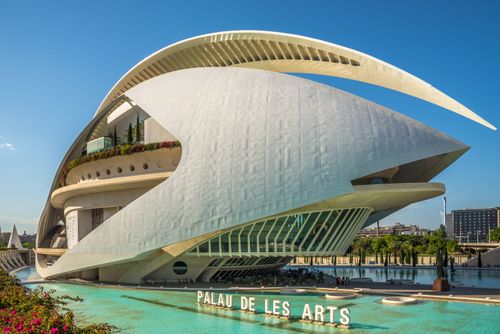
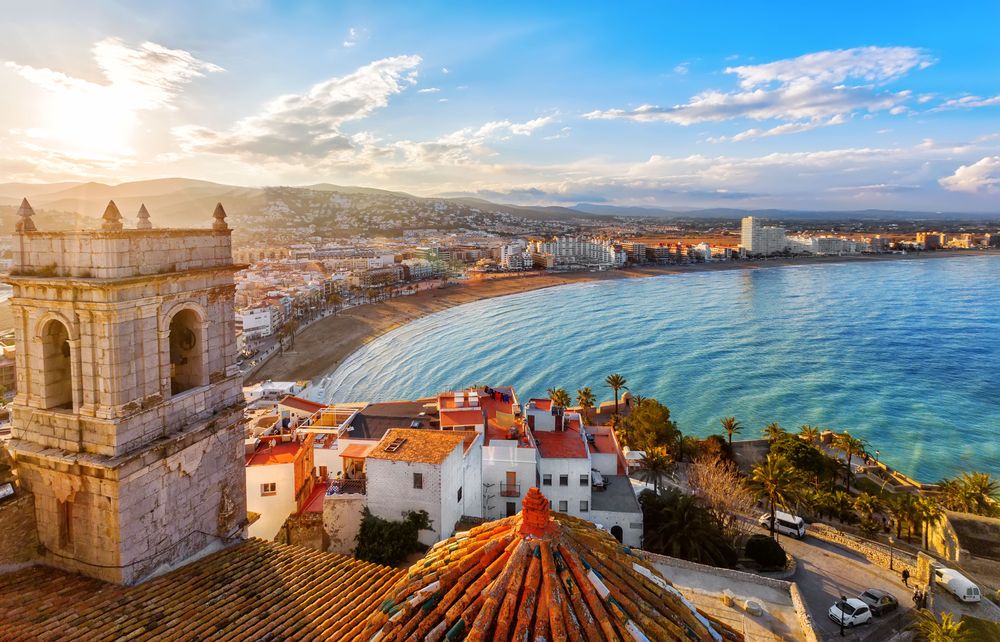
Between modernism, tradition and gastronomy
Valencia, the resplendent capital of the Valencian Community, appeals to all types of traveller. One of the reasons for this is its diversity. You can go to the beach, take a stroll through the old town, hop on a bike to explore the Jardins del Turia, discover the many museums and the City of Arts and Sciences, not forgetting the amazing Bioparc zoo. And don't miss the famous La Albufera Nature Park.

Turia Gardens in Valencia
- © trabantos / ShutterstockWith 800,000 inhabitants and 1.5 million including the metropolis, Valencia, Spain's 3rd largest city after Madrid and Barcelona, is a modern city that has exploited its proximity to the sea and extended its borders beyond the traditional city walls. Valencia was the capital of the Kingdom of Aragon in the 15th century, and the Parliament of the Valencian Community was the seat of the Spanish Republic in 1937, before the city was taken by Franco's troops.
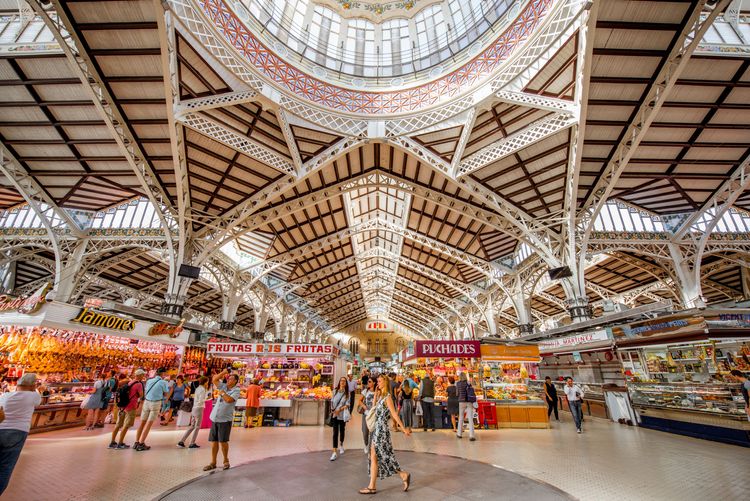
The central market is housed in a huge Art Nouveau building.
- © RossHelen / ShutterstockSimilarly, the powerful Borgia family, which produced many popes, came from Valencia. The city thus benefited from Italian influence during the Renaissance. The old town is home to the Colón Market, the Central Market and the Silk Exchange (la Lonja), all three of which bear witness to its commercial past, as well as the Gothic cathedral and the two surviving gates (there were originally 12, in the 14th century) that marked the city limits. The 30-metre-high Puerta de Serranos boasts an interesting Gothic style, with its five pointed arches and gargoyles. A dozen mosques dating from the Muslim occupation in the Middle Ages have been converted into churches. The emblematic Santa Catalina tower, a stone's throw from the cathedral, is clearly shaped like a minaret.
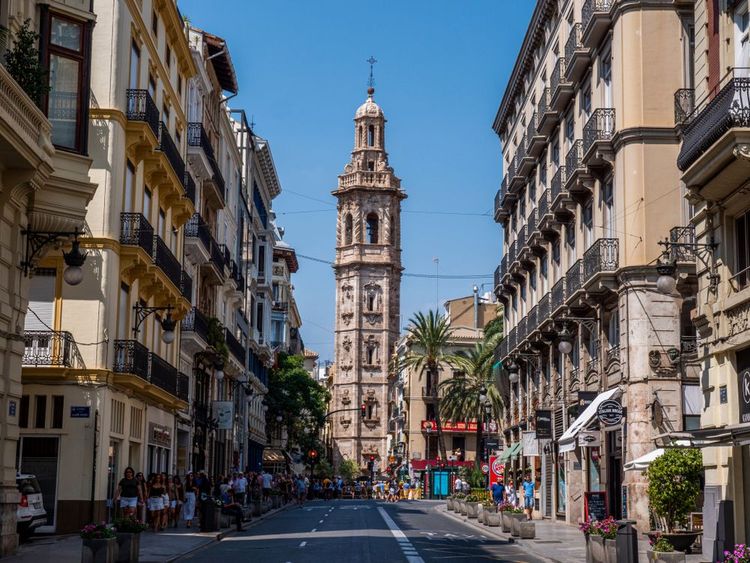
Santa Catalina Tower in Valencia
- © Marco Crupi / ShutterstockIn the 1980s, the city began to change with the emergence of modern art and Ricardo Bofill's transformation of the riverbed into a 7-kilometre garden. It was then that Calatrava's Cité des Arts et des Sciences was born, with its interactive museum, hemispherical cinema and Oceanografic, Europe's largest aquarium.
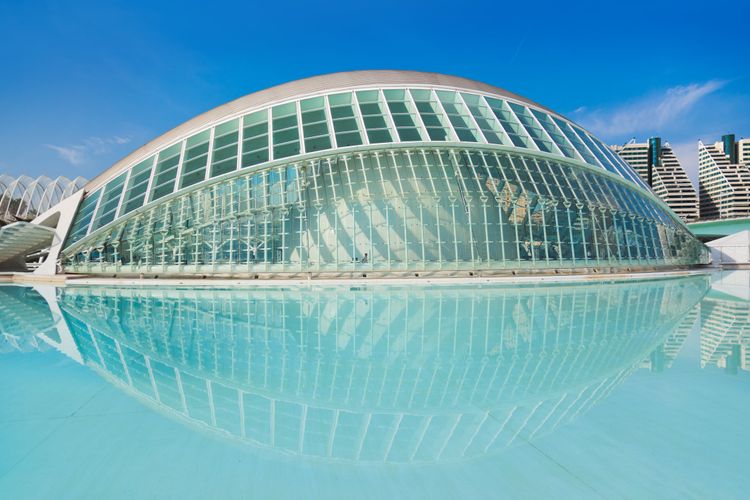
The Cité des Arts et des Sciences in Valencia
- © Tatiana Popova / ShutterstockIn the evening, head for Calle Caballeros, which runs from the cathedral in the Carmen district. There are plenty of tapas bars and nightclubs. Another nice spot is the arty Ruzafa district, with its many trendy bars, restaurants, boutiques and art galleries, not to mention the market. Don't forget to try the local specialities, including the world-famous Valencian paella, Horchata de Chufa, which is only found in the Valencia region!

Try the world-famous Valencian paella, Horchata de Chufa.
- © Raimunda-losantos / ShutterstockWe recommend eating some tapas at the Colón market, a sort of London Covent Garden, built in the 1920s as a centre for the export of oranges and vegetables in general. Nowadays, a variety of bars are set up in a pleasant atmosphere and unique decor. The 8,000 m² and 400 stalls of the Marché Central offer a wide variety of local produce in a huge building constructed in the 1920s from iron, bricks, earthenware and mosaics.
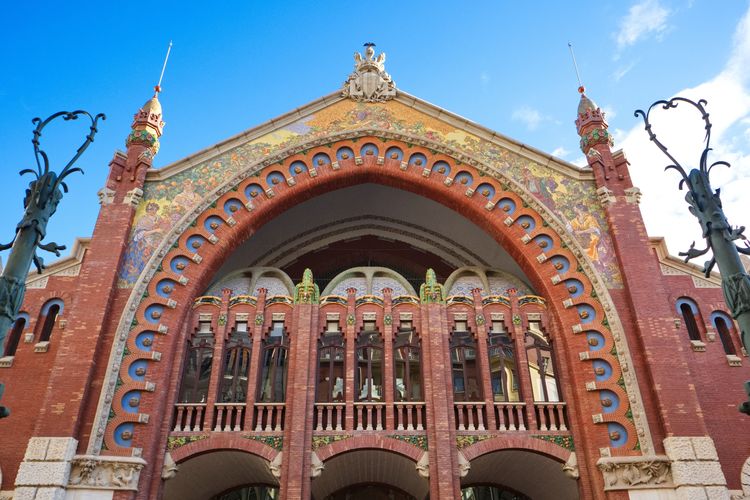
The facade of the Colón market in Valencia.
- © jpja1472 / ShutterstockIf you want to relax after an intense cultural activity, head for one of the public beaches 15 minutes away by bus, or take a stroll along the old riverbed of the Turia, which has been converted into green spaces offering a wide range of leisure activities. It links the City of Arts and Sciences with the astonishing Bioparc, a cross between a zoo and a safari.
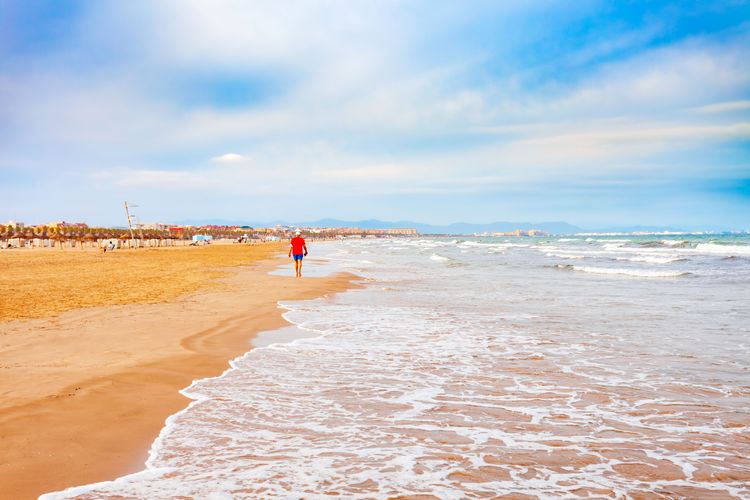
a long stretch of beach in Valencia
- © saiko3p / ShutterstockIf you visit Valencia in March, particularly between the 15th and 19th, you'll be treated to one of the city's most important and world-famous festivals, Las Fallas. Valencians prepare for this festival all year round by making ninots (figurines) and other objects, which they burn at the end of the festivities. Admiring the sunset in the Parc de l'Albufera is a must. Music lovers can enjoy a concert at the Palau de la Musica or an opera at the Palau de les Arts Reina Sofia.
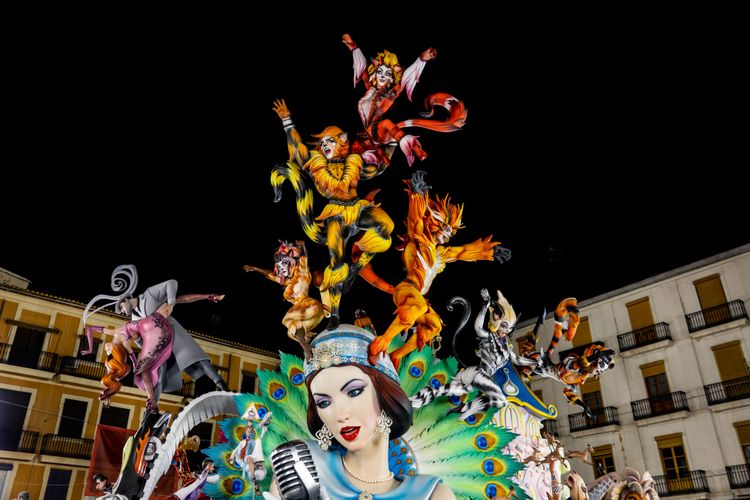
Las fallas is one of the city's must-see celebrations.
- © FCG / Shutterstock
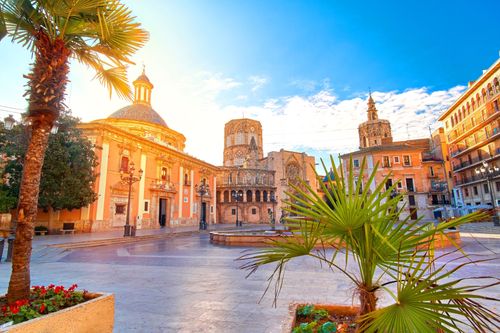
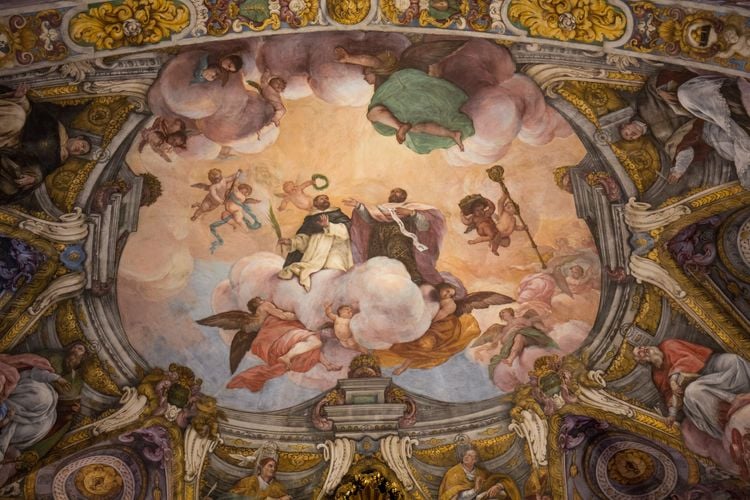 1
1
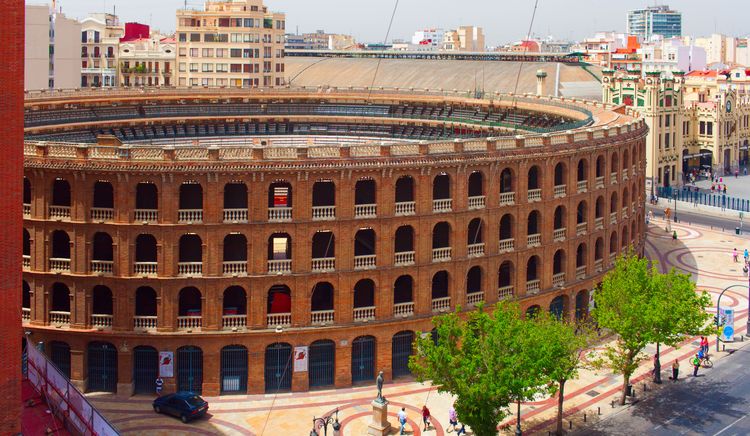 2
2
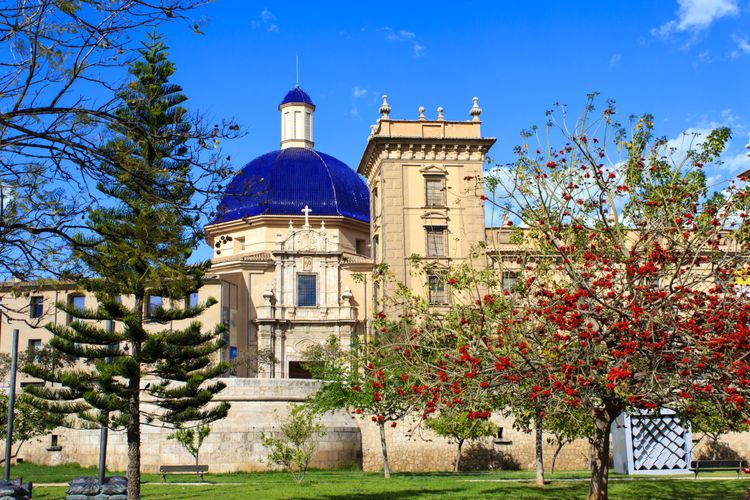 3
3
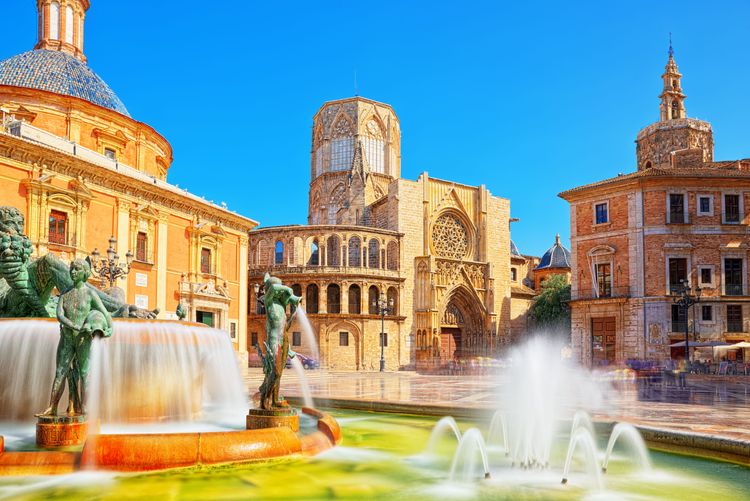 4
4
Valencia is accessible by land, sea and air. The city is linked to the main cities of Spain and Europe. Valencia also has two railway stations: València-Nord station, where the Cercanías network operates, and Joaquín Sorolla station, for AVE services to Madrid, Cuenca, Seville and Cordoba. València airport is just 8 km from the city and offers daily flights to the main national and international destinations.
Are you about to visit Valencia in Spain and don't yet know where you'll be putting down your suitcases during your stay? With its unique heritage, festive atmosphere, beaches and exceptional sunshine, Valencia is a city that is bound to leave you with unforgettable memories, especially if you choose the right accommodation. Between luxury hotels, youth hostels and guest houses, you have a myriad of choices!
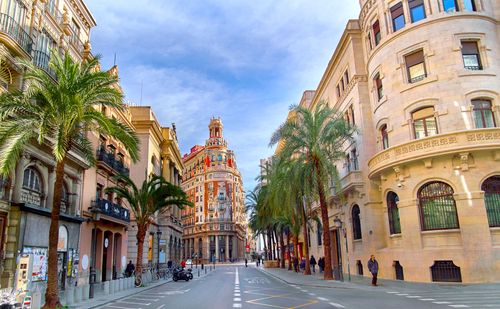
From 15 to 19 March, during the Fallas de San José, a UNESCO World Heritage Site, Valencia is transformed into a gigantic feria: an impressive carnival to behold, but not necessarily the best time to visit the city! Due to the extremely high temperatures, we recommend that you visit the city outside the summer months.
If you prefer peace and quiet, and quiet cultural visits, come in autumn instead: the weather is still mild, but you'll avoid the crowds!
Driving in Valencia is easy and distances are relatively short. Hiring a scooter can be a good solution, as you'll be able to get around all parts of the city, including the historic centre. Otherwise, you'll have to walk a lot, as the metro and tramway don't serve many parts of the city, starting with the Cité des Arts et des Sciences! We recommend taking the Turia Gardens, which run 7 km up the city, from the Biopark to the City of Arts and Sciences, a really pleasant walk. Don't hesitate to go cycling: Valencia is located on former marshland, so there are no hills - it's all flat! Nature lovers should visit the Parc de la Albufera, with its 10,000 species. Don't forget to take the Valencia Tourist Card to get around by metro, bus and tram, and benefit from numerous discounts.
Valencian water, a mixture of Cava (Spanish Champagne) and natural orange juice, and Horchata de Chufa (tiger nut milk with water and sugar) usually accompanied by fartones (a long brioche bun, typical of Valencia) are the two typical Valencian drinks. You can try them in the Mercado Colon, but the best ones are in the traditional horchatérias, the most famous being Santa Catalina, in the old town near the cathedral, superbly decorated with azulejos.
As for the must-try dishes, Valencia is home to paella and its variant, fideuá. You can try some of these in the traditional restaurants specialising in rice located on the seafront promenade, Paseo Neptuno, including La Pepica and La Marcelina, two of Valencia's institutions. Rice can be eaten in many different ways: a banda, with seafood, with meat, with vegetables and even as black rice (thanks to the squid ink). Valencia is a gastronomic capital with no fewer than four Michelin-starred restaurants! For beer lovers, there are two local beers in Valencia: Tyris and Altura de Vuelo.
Ingenuity and creativity are two words that perfectly sum up the characteristics of the clothes created by young Valencian designers. Around the Colón market, you'll find a number of interesting shops. Although it is one of the specialities, orgeat is a little fragile to transport. Tiger nuts were brought over by the Muslims in the eighth century, and monks were responsible for turning them into orgeat.
You can take home Jamón Ibérico de recebo (a top-quality jam), a paella kit (the vessel, rice, oil and saffron), Valencian water (a traditional Valencian cocktail made from orange juice and cava (Spanish champagne)), fans and traditional Valencian ceramics (plates, glasses, etc.).
You absolutely must spend at least two days at the City of Arts and Sciences, which has become one of the symbols of the city. It includes an aquarium (Oceanografic), the Príncipe Felipe Science Museum, the Umbracle (a large hanging garden), a 3D Imax cinema with a 360-degree auditorium, a 5,500-seat Agora and the Reina Sofia Palace of the Arts (the opera house for concerts and ballets).
explore Try out our comparators
It is Easy to travel



